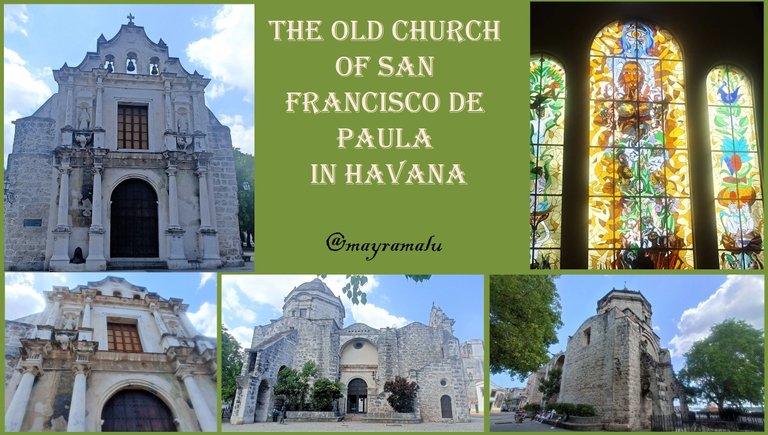
Hello, my fellow travelers, today I have the pleasure of showing you a jewel of our heritage, declared a national monument: the old Church of San Francisco de Paula in Havana.
It's been a long time since I walked through Havana's historic center, and I really needed to. I love appreciating old buildings and learning about their history. Each place tells us something: their customs, their way of thinking and creating. Those of us who live today have a little bit of everyone who came before us, so it's important to learn about it and contribute to the care and preservation of this legacy.
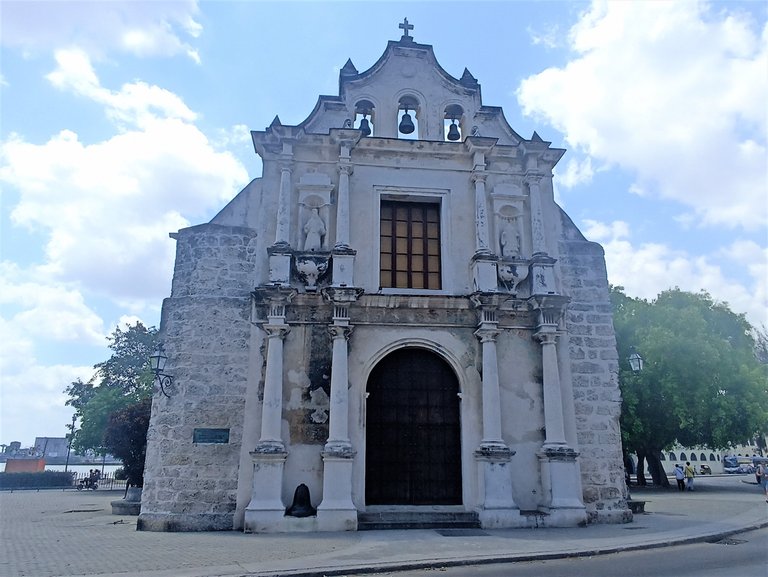
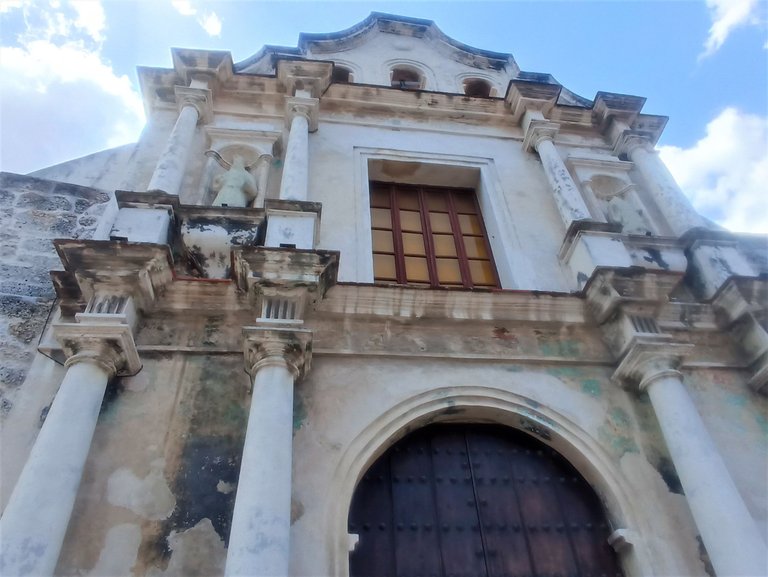
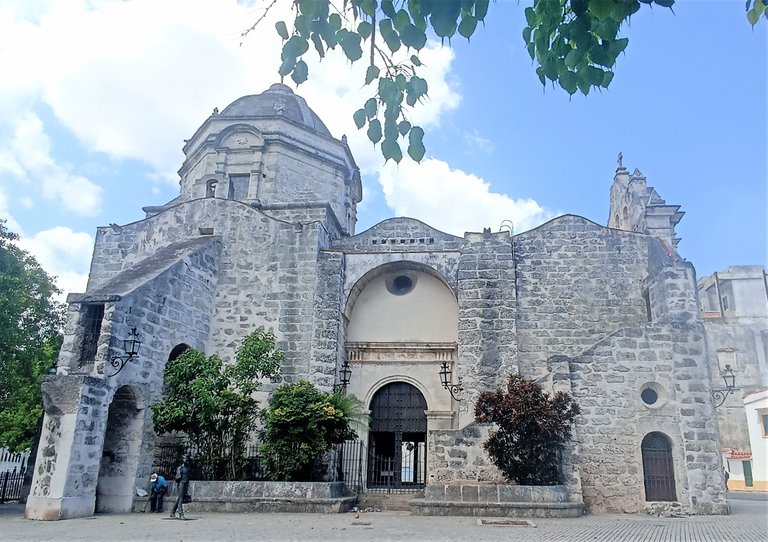
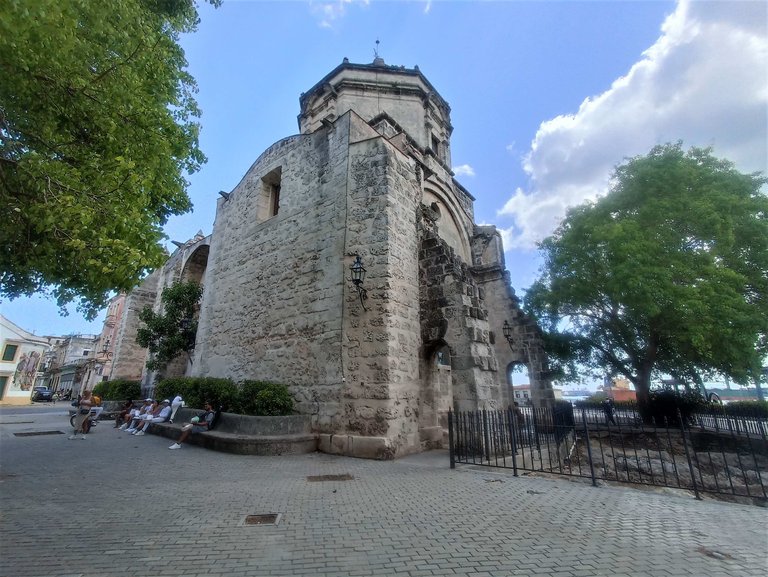
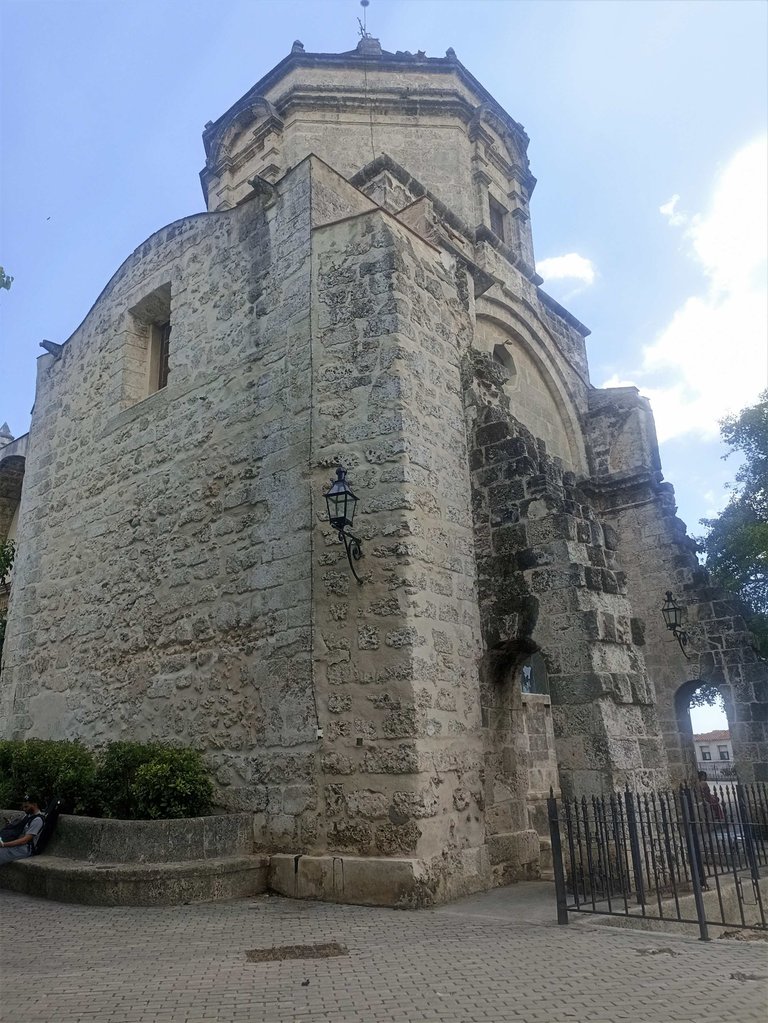
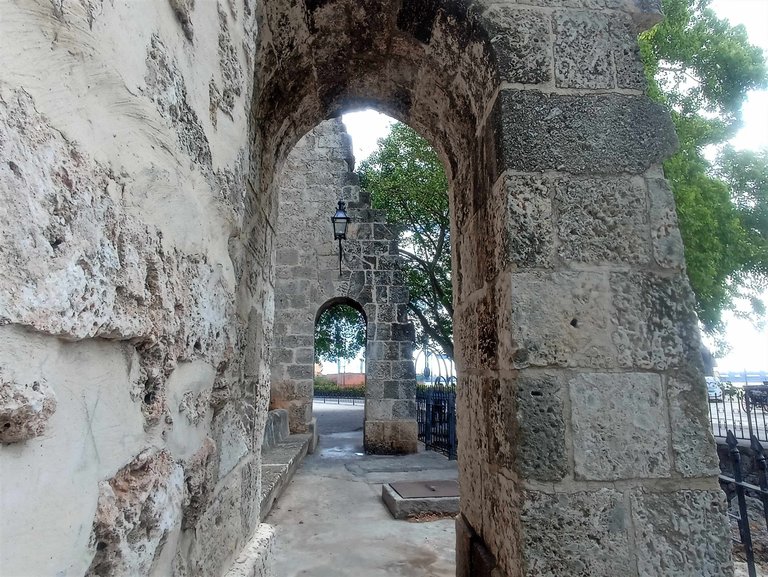
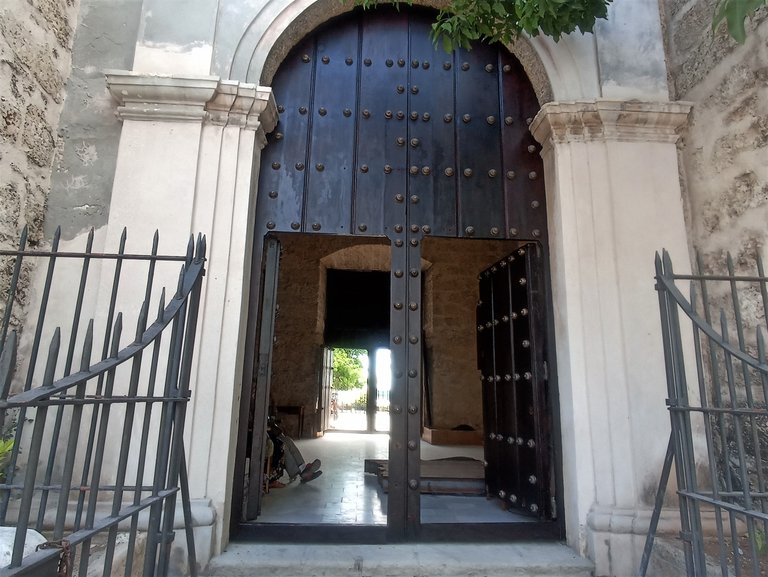
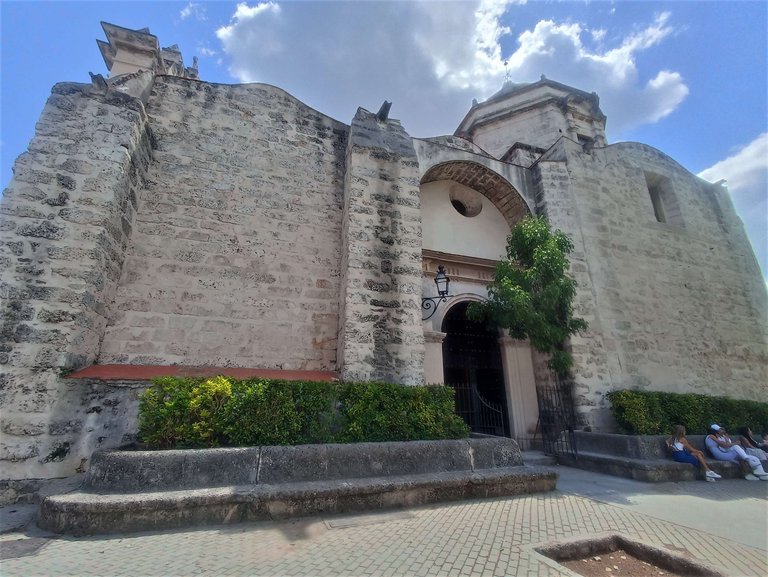
As we passed by the old church, we saw the door open, and upon entering, the local historian greeted us and explained that it wasn't open to the public because it was being restored. However, she kindly let us in anyway and explained the historical details of this beautiful monument.
I was pleasantly surprised by the beauty of the interior. The first thing that caught my eye was the large, 35-square-meter stained-glass window, designed by Nelson Domínguez and built and installed by Rosa María de la Terga, both renowned Cuban artists. The sunlight hitting the window allows us to see the brightly colored figures.
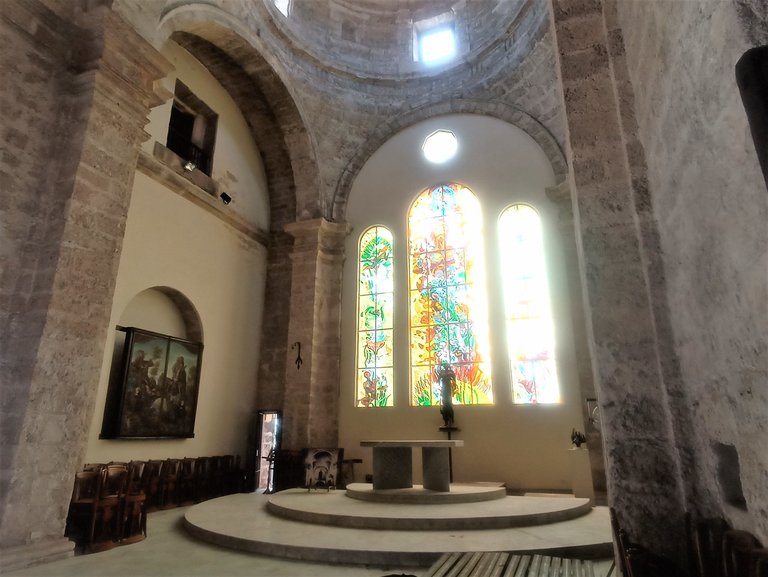
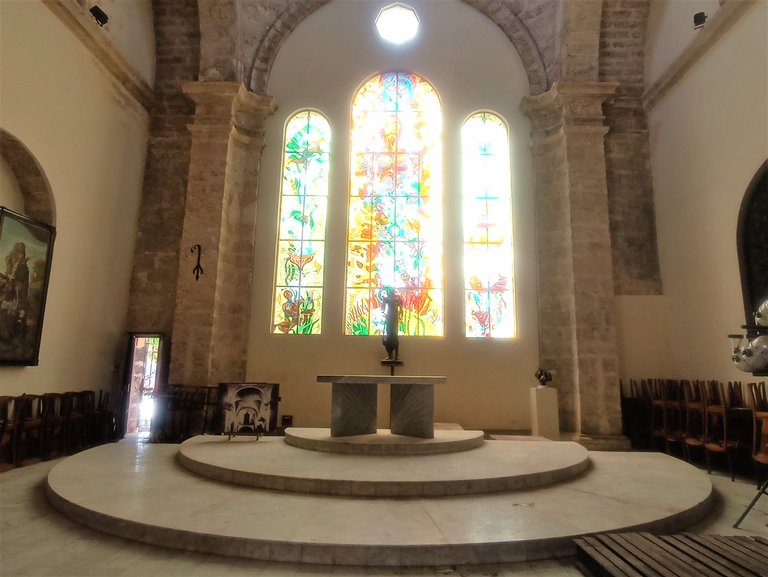
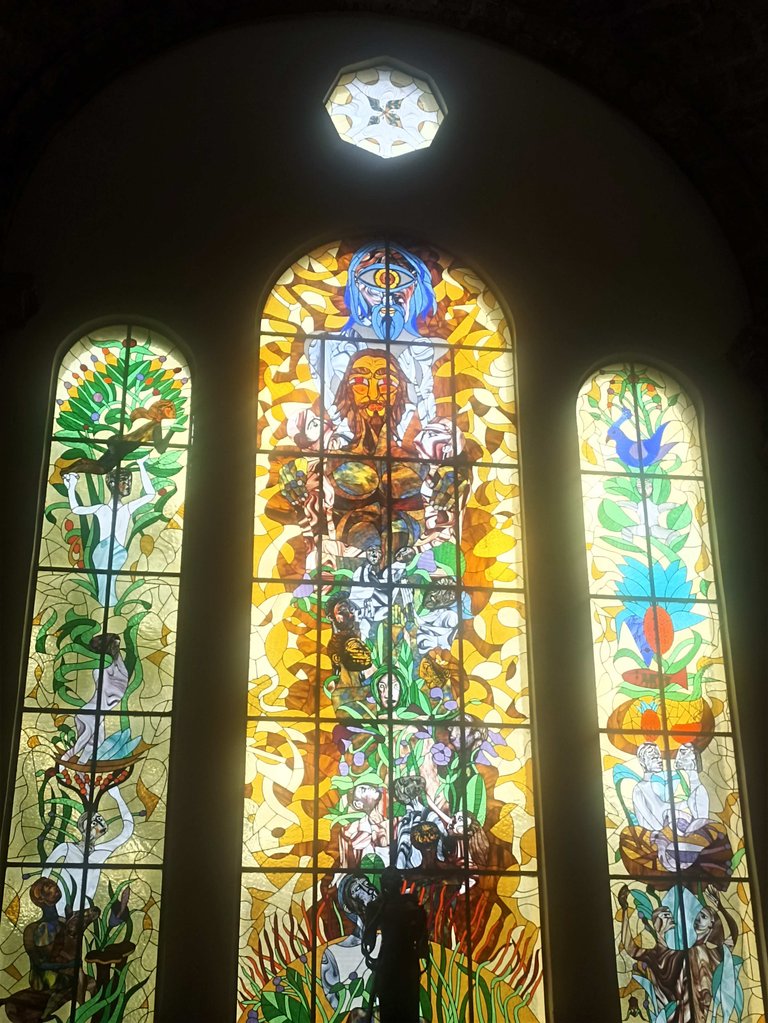
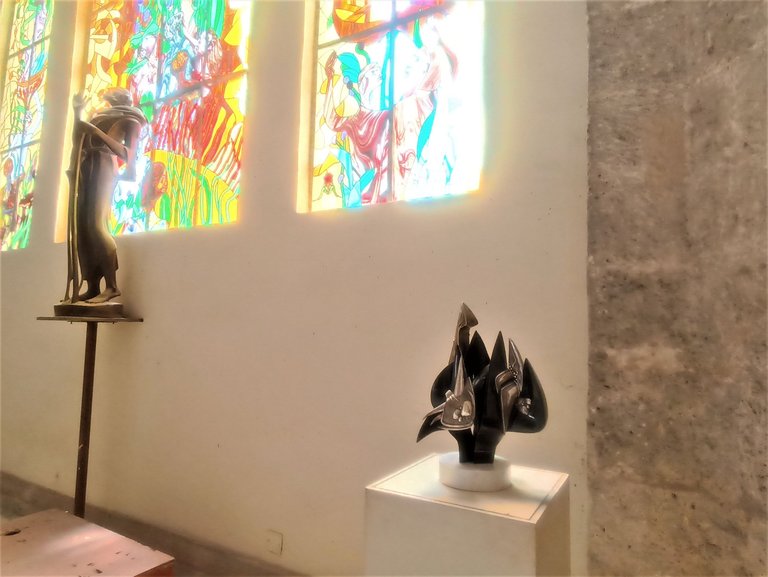
The church was built in 1746 with native stones and is in the Baroque style of the time. There was also a small women's hospital adjacent to the church. In 1907, it ceased to serve as a church and suffered considerable deterioration over time. The hospital was completely ruined, and the only thing that survived was what we see today. After restoration by the City Historian's Office, directed by our illustrious Eusebio Leal, it began to function as a sacred music concert hall.
Looking up at the ceiling, I'm amazed to see the enormous octagonal dome and the organ, which has been preserved since the church's inauguration and still works with its original machinery.
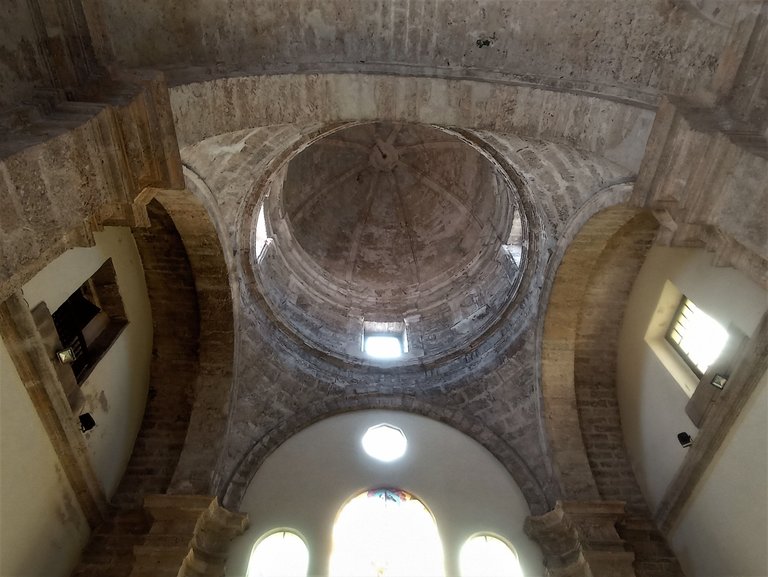
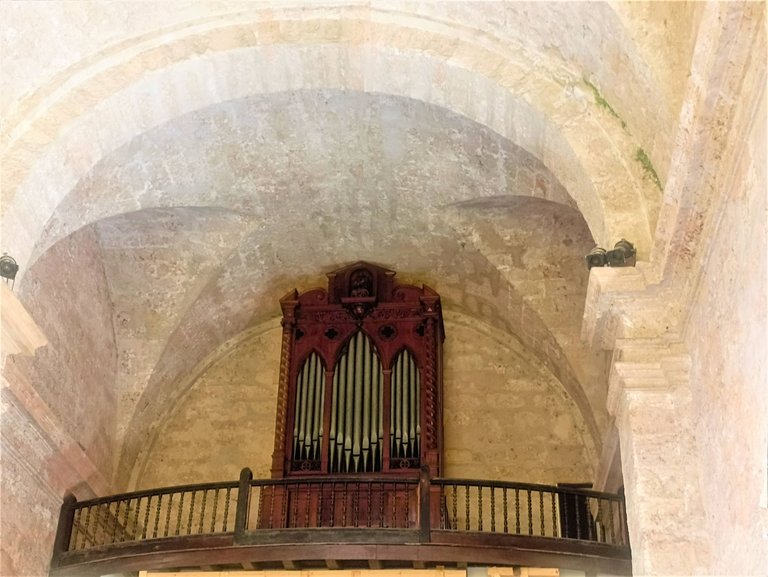
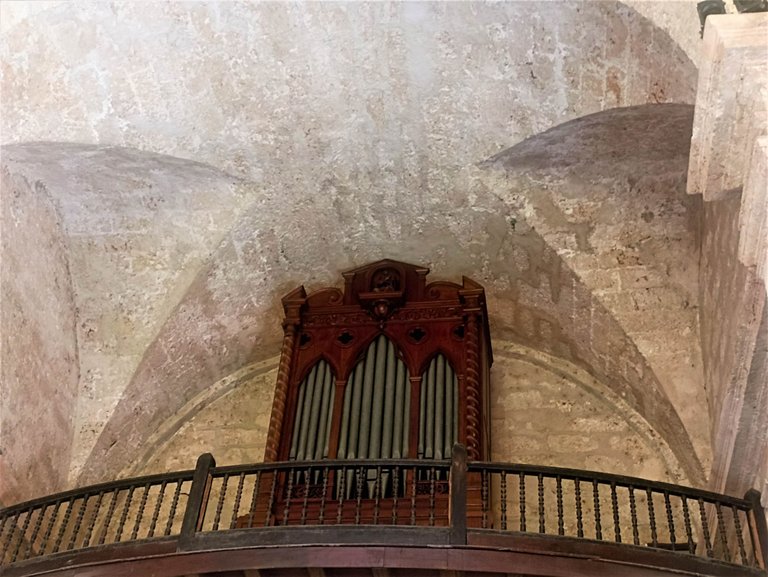
Seeing our interest in exploring the place, the historian continues to show us the valuable works it houses. Among them is a beautiful triptych by the Cuban painter Cosme Proenza. When closed, it shows us one painting, and when its two leaves are opened, it reveals another larger painting, both referring to the creation of the world. She tells me that there are many paintings stored until the work is finished.
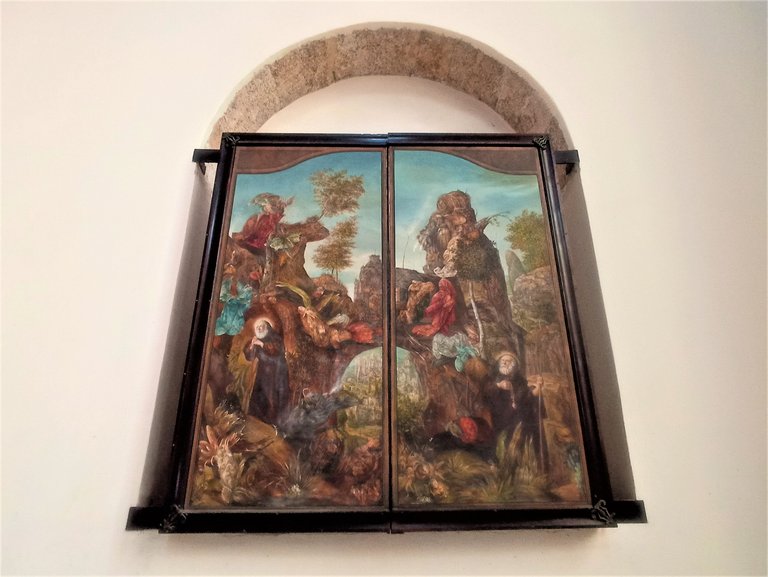
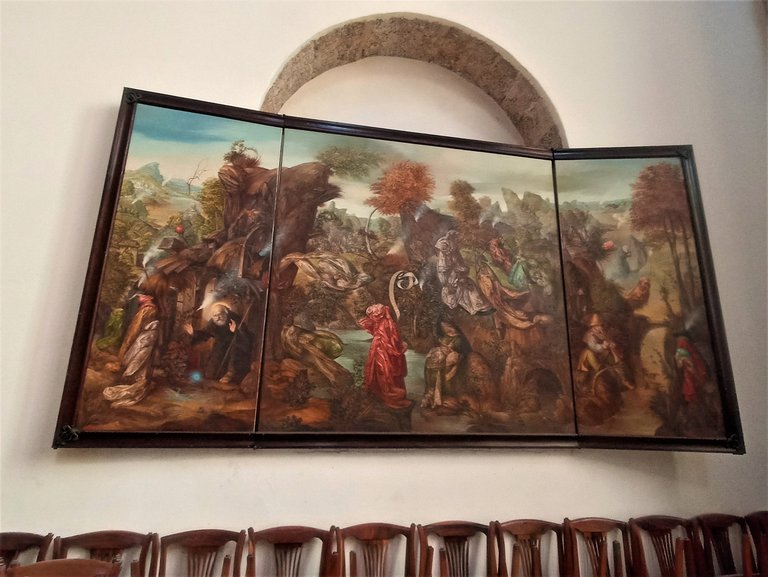
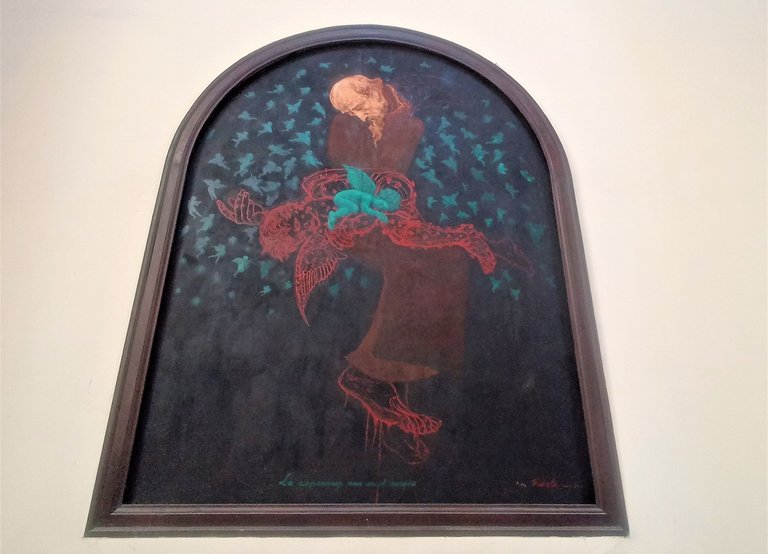
She showed us a bronze urn that houses the ashes of the black Cuban violinist Claudio José Brindis de Salas (1852-1911), who was the greatest violinist of his time and was known as the Black Paganini. There is also a plaque on the floor in his honor.
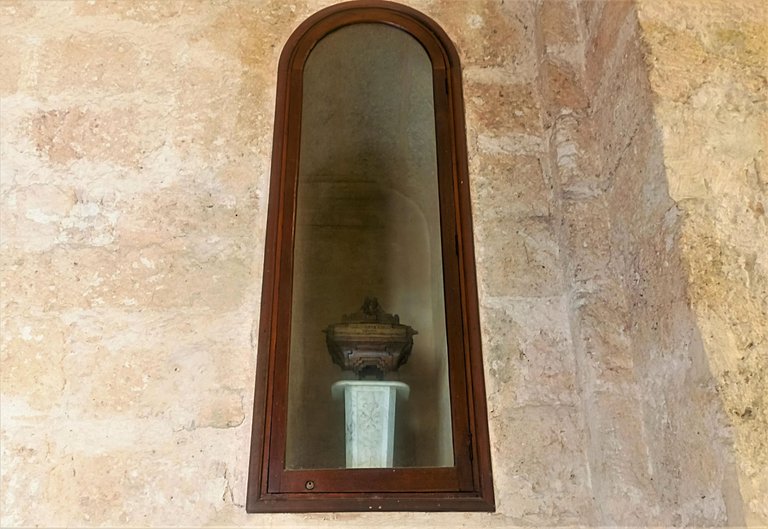
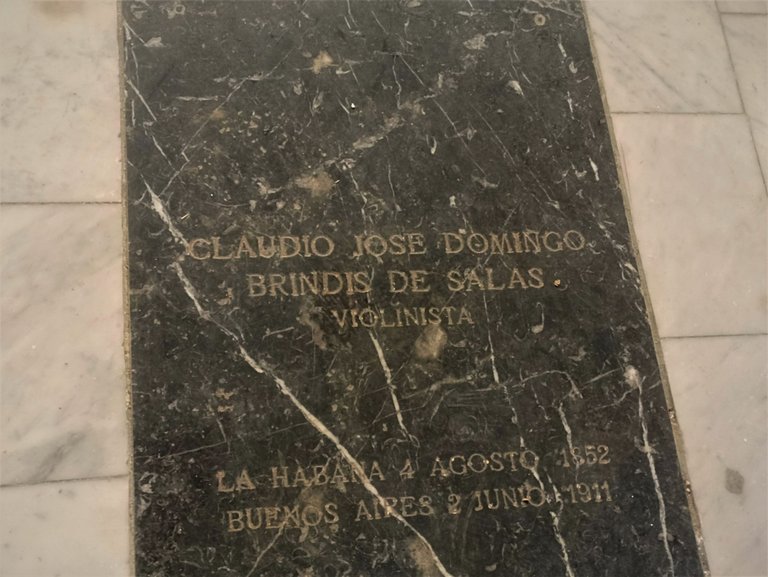
No one can imagine there's so much beauty in that small space. I'm so glad I got to experience it.
The restoration work is nearing completion, and it will soon open its doors to allow us to enjoy its full splendor. I'll be on the lookout for news to visit it. I invite you to explore this beautiful place and its surroundings; you won't regret it.
See you soon!
The historical data was given by the historian of the place and consulted in this site.

Antigua Iglesia de San Francisco de Paula en La Habana
Hola mis amigos viajeros, hoy tengo el placer de mostrarles una joya de nuestro patrimonio que está declarada como monumento nacional, se trata de la antigua Iglesia de San Francisco de Paula en La Habana Vieja.
Hacía mucho tiempo que no caminaba por el casco histórico de La Habana y ya lo estaba necesitando, me gusta mucho apreciar las construcciones antiguas y conocer la historia que tienen, cada lugar nos cuenta algo, las costumbres, su forma de pensar y de crear. Las personas que vivimos en la actualidad tenemos un poquito de todos los que nos antecedieron, por eso es importante conocerlo y contribuir al cuidado y preservación de este legado.
Al pasar por frente a la antigua iglesia vimos la puerta abierta y al entrar nos atendió la historiadora del lugar y nos explicó que no estaba abierta al público porque está siendo restaurada, pero de todas formas muy amablemente nos dejó entrar y nos explicó los detalles históricos de este hermoso monumento.
Me sorprendió gratamente al ver la belleza interior, lo primero que me llamó la atención fue el gran vitral de 35 metros cuadrados, diseñado por Nelson Domínguez y su construcción y montaje estuvo a cargo de Rosa María de la Terga, ambos reconocidos artistas cubanos. El sol al incidir en el vitral nos permite ver las figuras de brillantes colores.
La iglesia se construyó en 1746 con piedras autóctonas, tiene el estilo barroco de esos tiempos. También había un pequeño hospital de mujeres aledaño a la iglesia. En 1907 deja de servir como iglesia y sufrió un gran deterioro con el paso del tiempo, el hospital quedó totalmente en ruinas y de la iglesia solo se salvó lo que vemos en la actualidad, después de restaurada por la Oficina del Historiador de la Ciudad, dirigido por quien fue nuestro ilustre Eusebio Leal y comienza a fungir como una sala de conciertos de música sacra.
Al mirar hacia el techo me sorprende ver la enorme cúpula de base octogonal y el órgano que es el mismo que se conserva desde la inauguración de esta iglesia y que aún funciona con la maquinaria original.
Al ver nuestro interés por conocer el lugar, la historiadora nos sigue mostrando las valiosas obras que tiene, entre ellas está un hermoso cuadro en forma de tríptico del pintor cubano Cosme Proenza, que al estar cerrado nos muestra una pintura y al abrirse sus dos hojas nos muestra otra pintura mayor, ambas referidas a la creación del mundo. Me dice que hay muchos cuadros de pinturas que están guardados hasta que terminen los trabajos.
Nos mostró una urna de bronce que conserva las cenizas del violinista negro cubano Claudio José Brindis de Salas (1852-1911) quién fue el mejor violinista de su época y lo llamaban el Paganini negro. También en el suelo hay una tarja en su honor.
Nadie puede imaginar que hay tanta belleza en ese pequeño espacio. Yo estoy muy contenta de haberla conocido.
La obra de restauración está finalizando y pronto abrirá sus puertas para permitirnos disfrutar de todo su esplendor. Estaré atenta a las noticias para visitarlo. Los invito a conocer este precioso lugar y sus alrededores, no se arrepentirá.
¡Hasta pronto!





